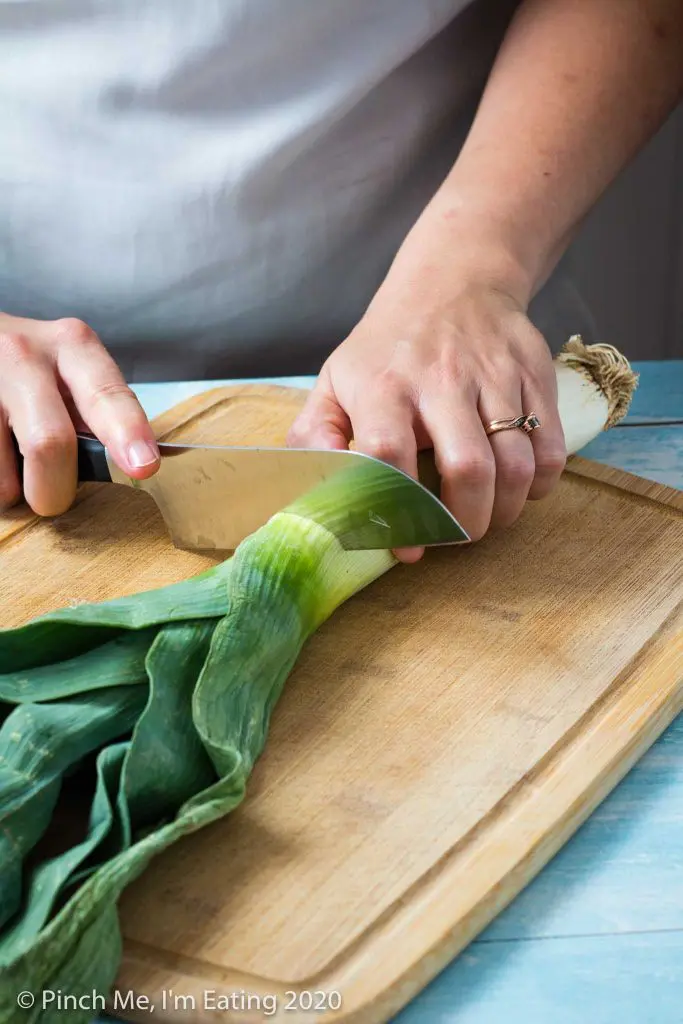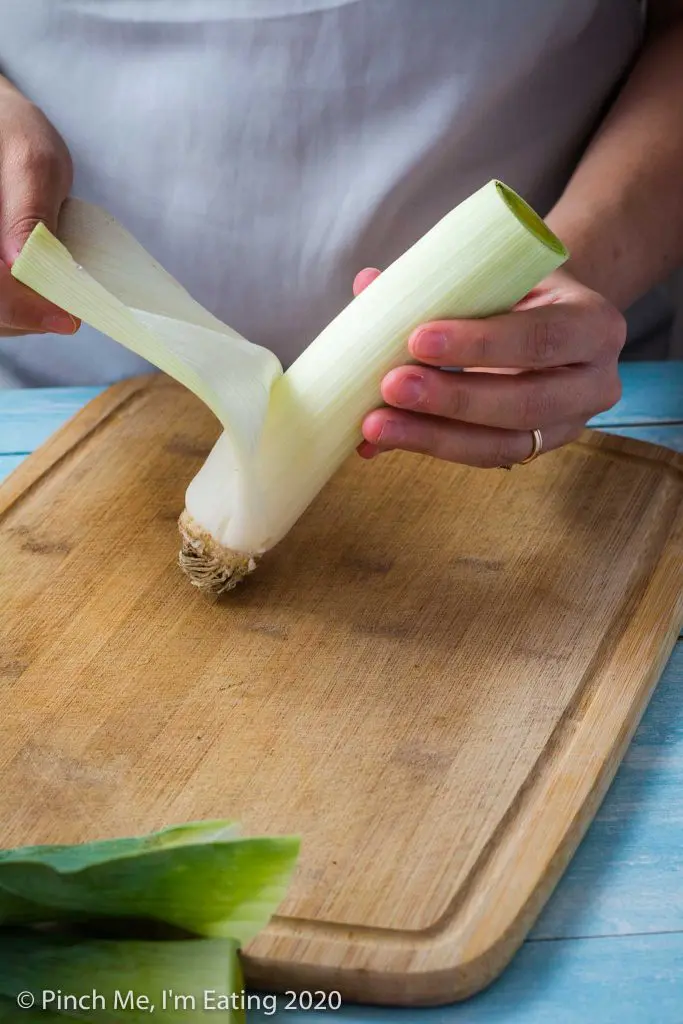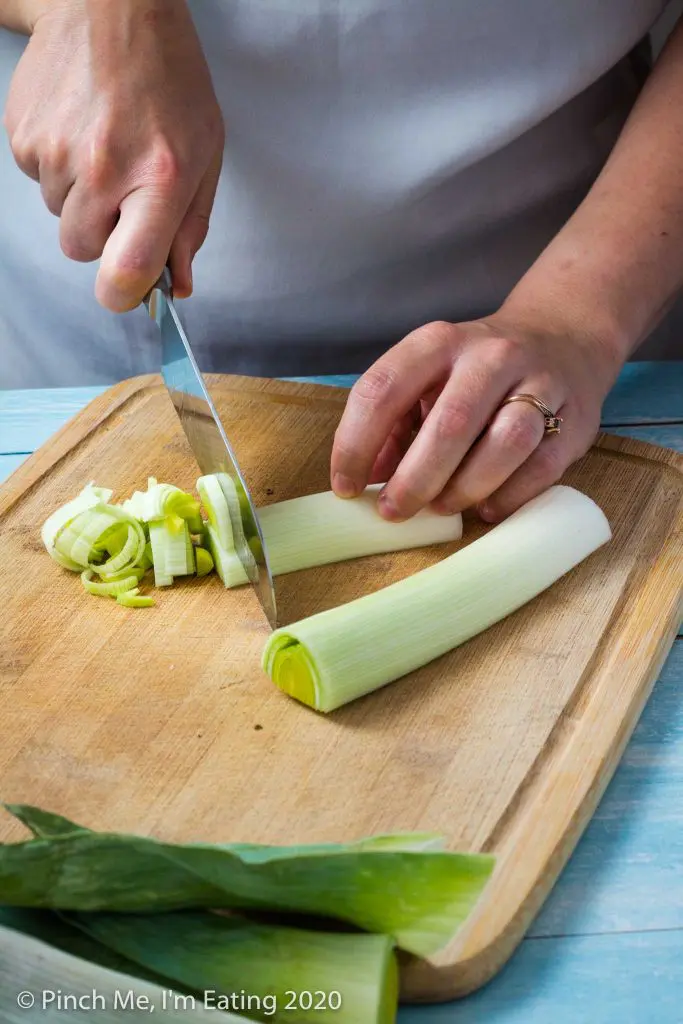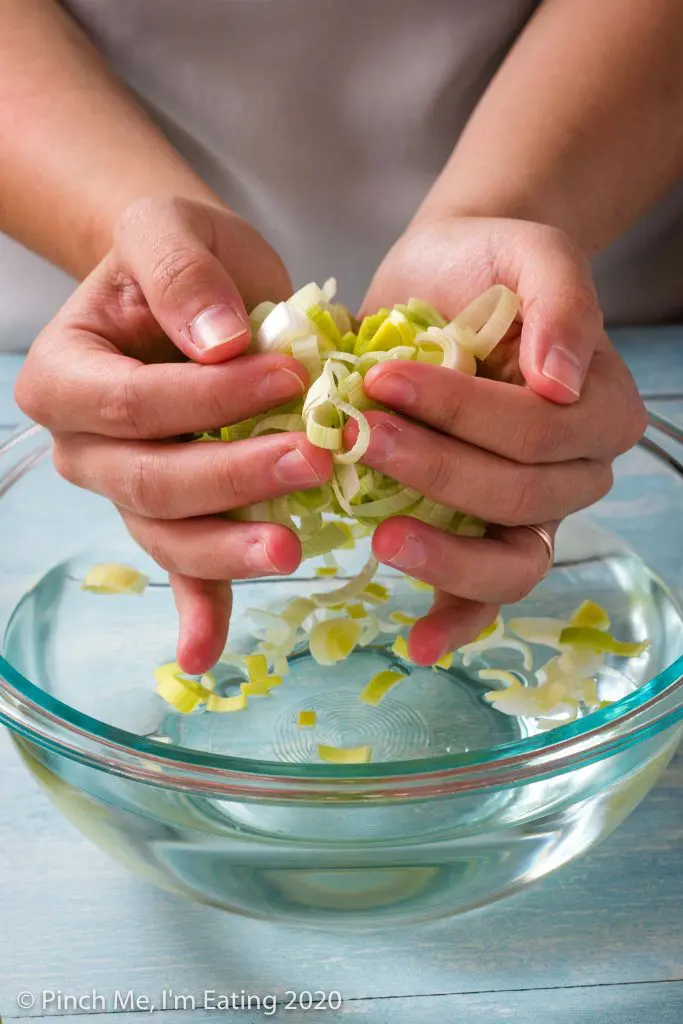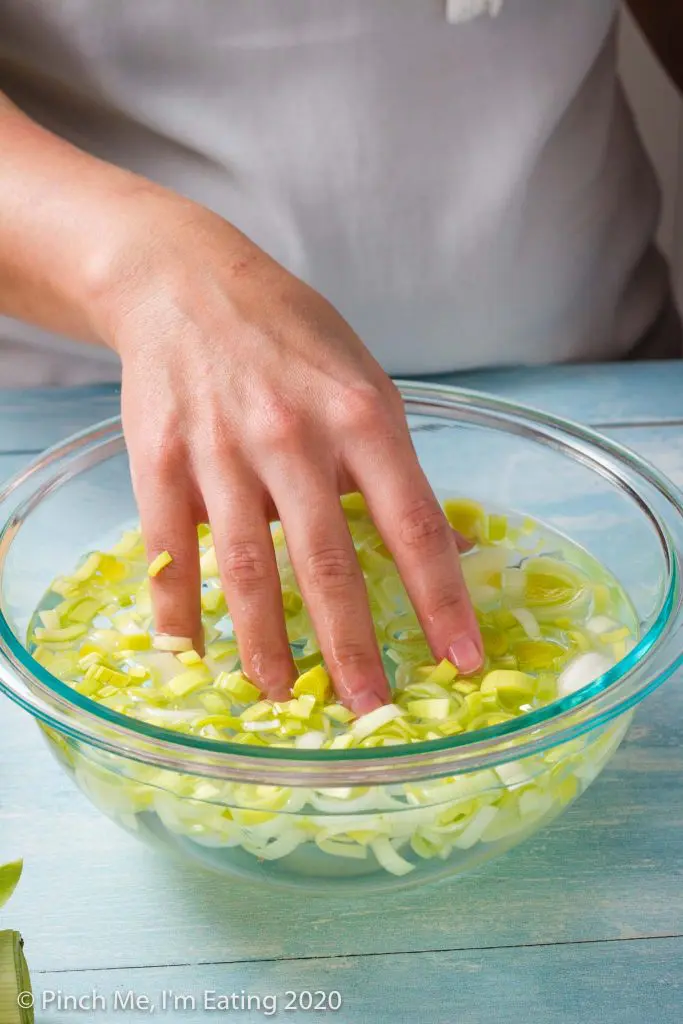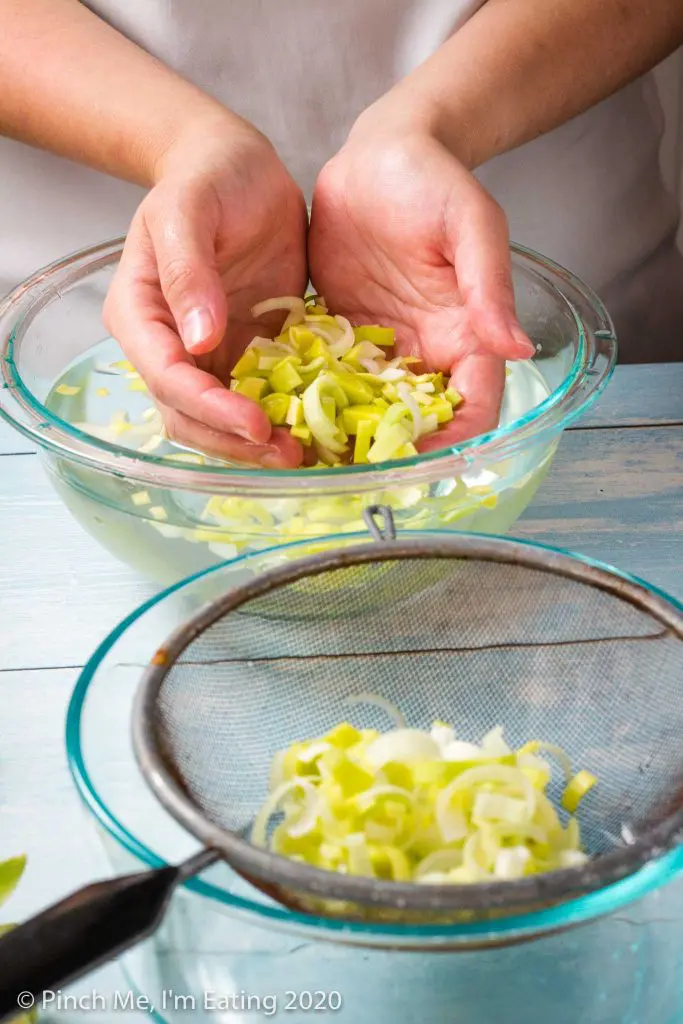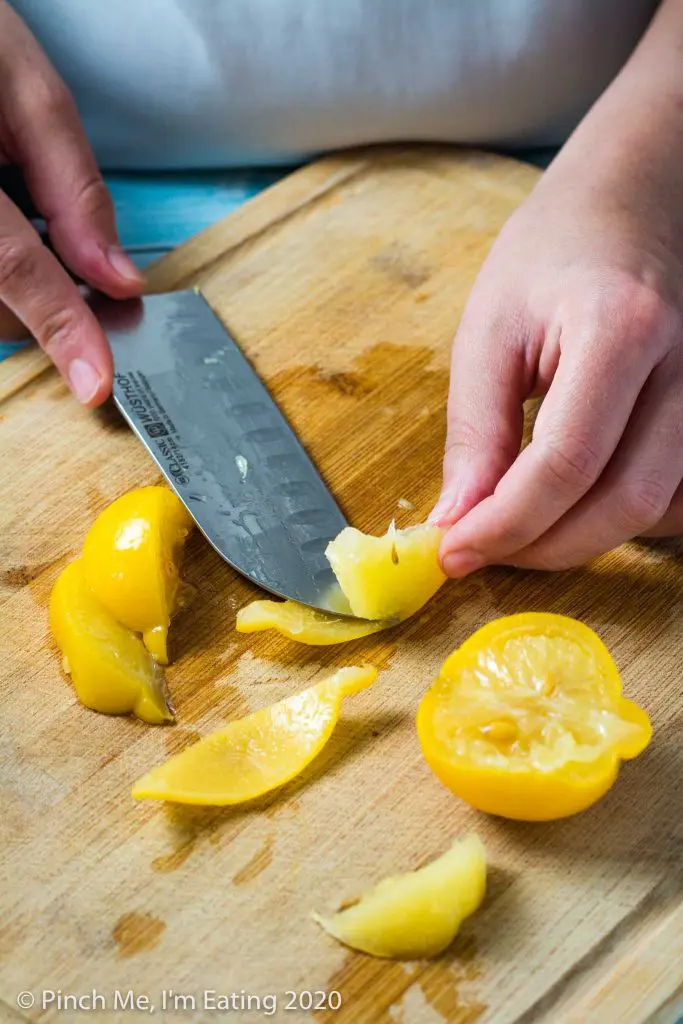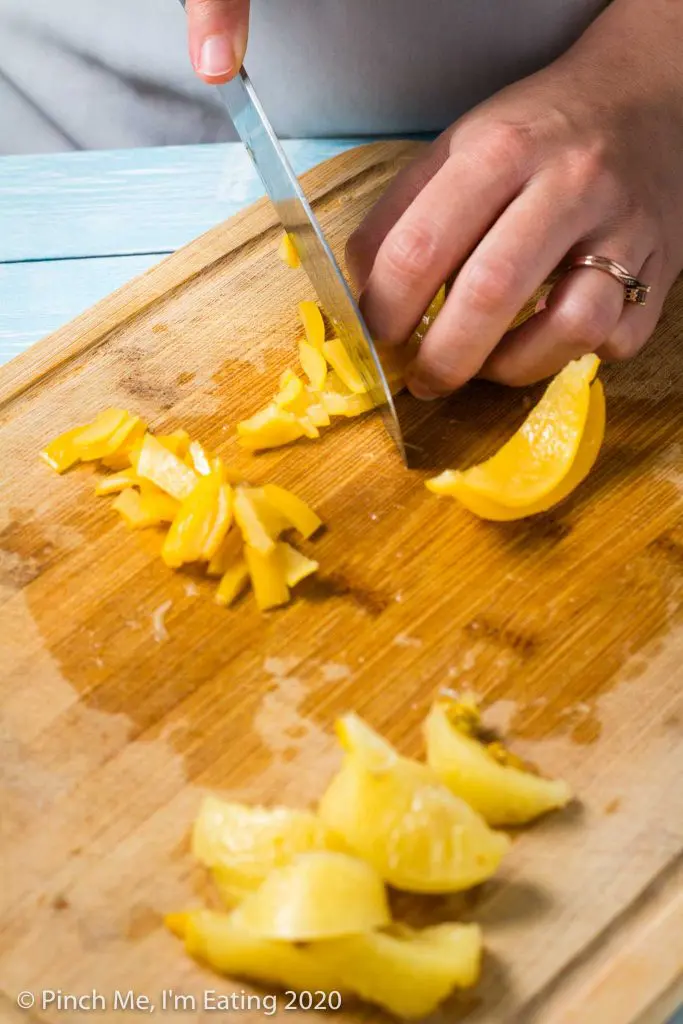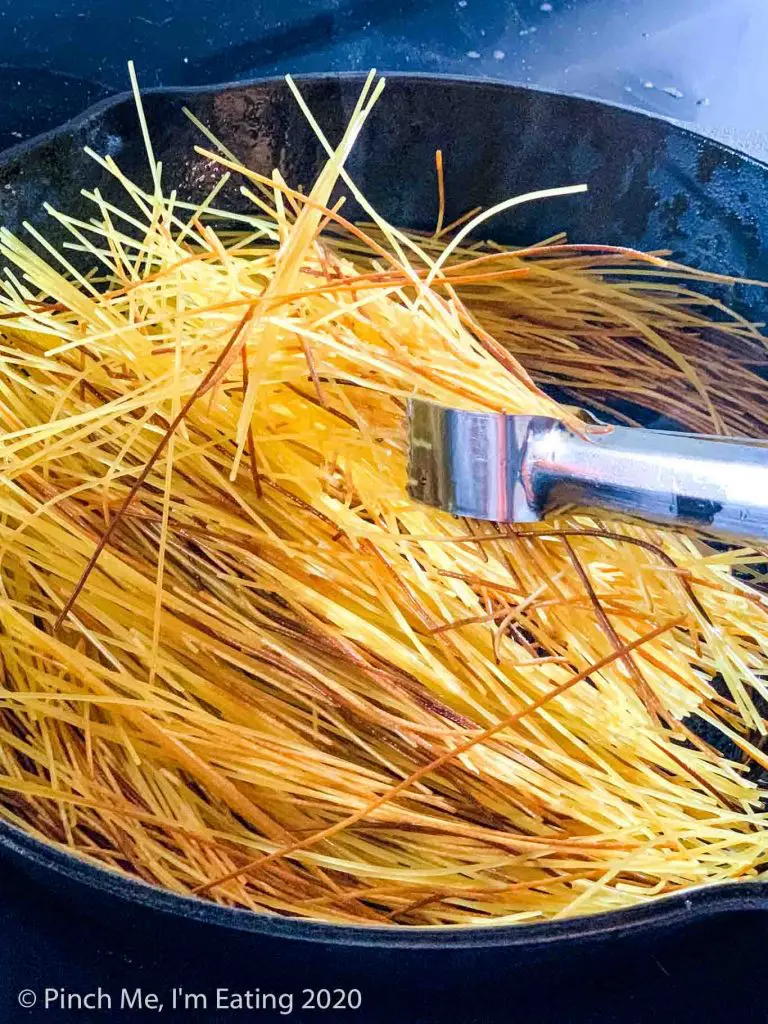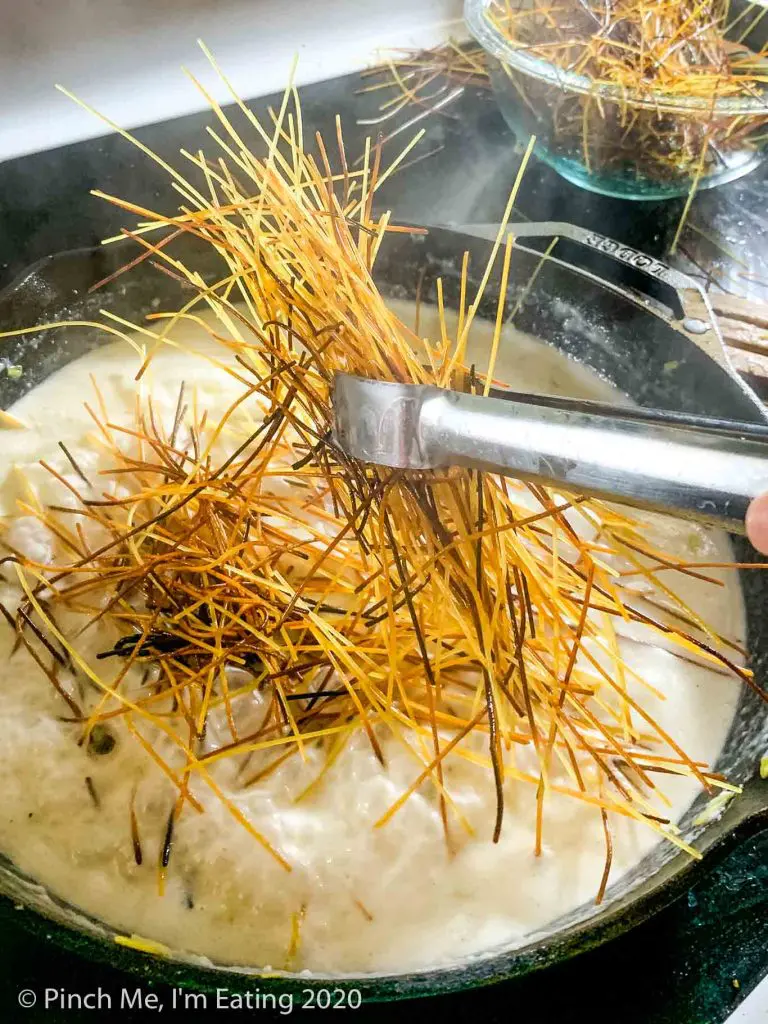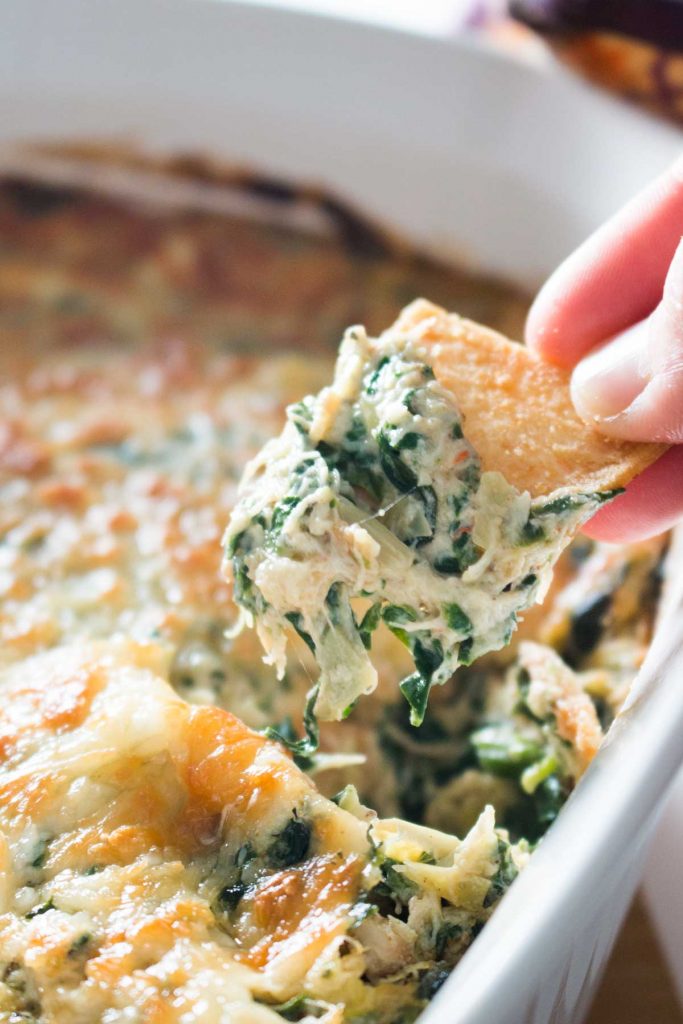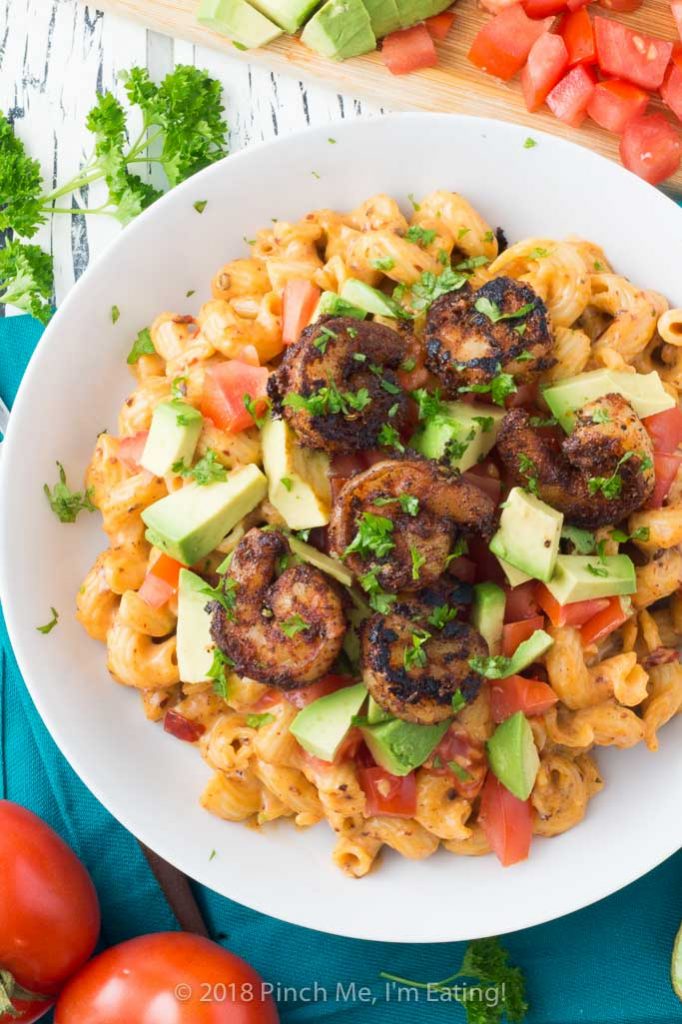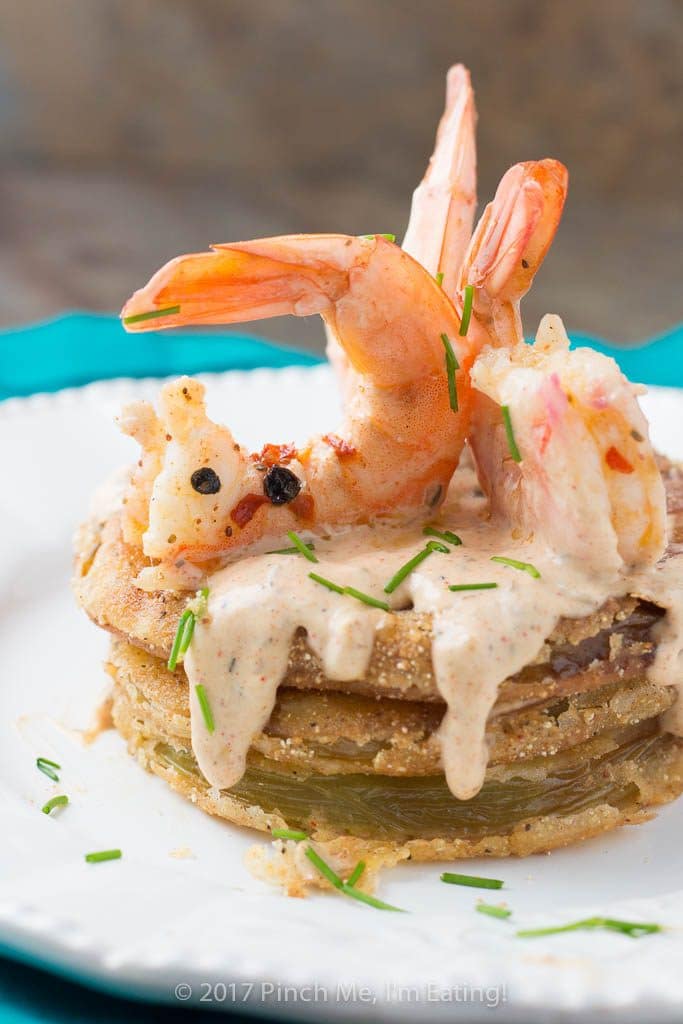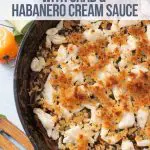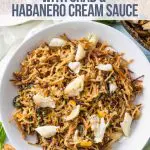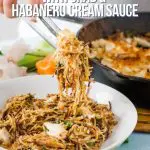Fideos: Toasted Angel Hair Pasta with Crab and Habanero Cream Sauce
While the flavors in this dish are complex, this toasted angel hair pasta with crab and habanero cream sauce can be made in one pan in only 45 minutes! Equally good for weeknight dinners or special occasions!
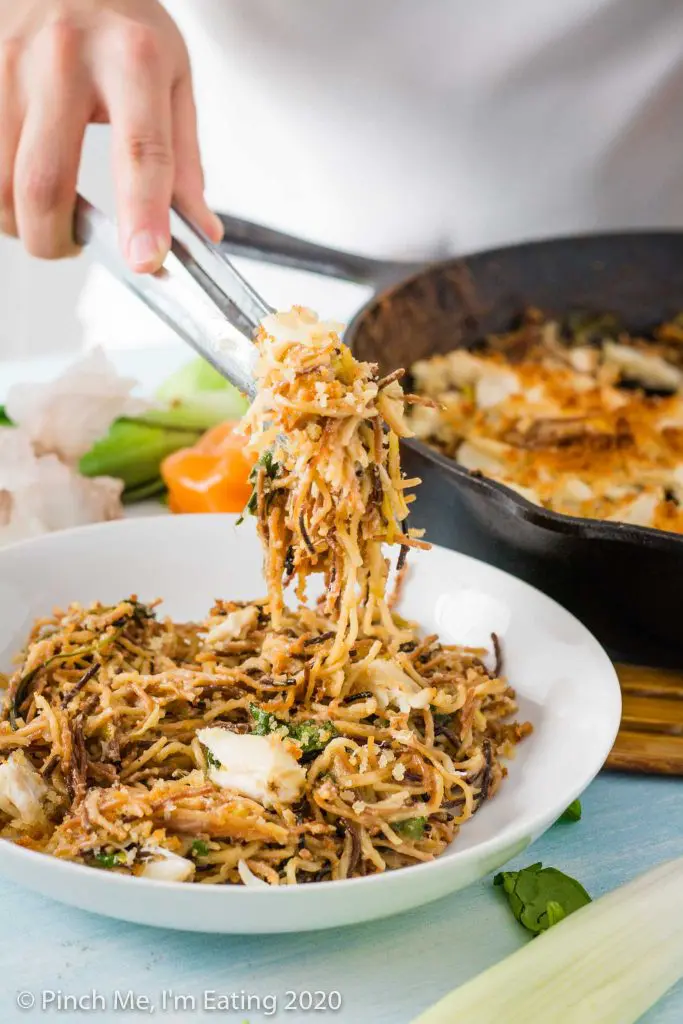
I’ve been wanting to recreate this crab pasta since my birthday last year when I had a similar dish at my favorite Charleston restaurant, Le Farfalle. From the title, the dish sounds complicated: Toasted angel hair pasta with crab, habanero cream sauce, and preserved lemons.
But even I was astonished at how simple it was to make when I finally got down to it! One pan, 45 minutes? Impossible!
And yet, it’s probably one of the most delicious (and impressive!) things I think I’ve ever made.
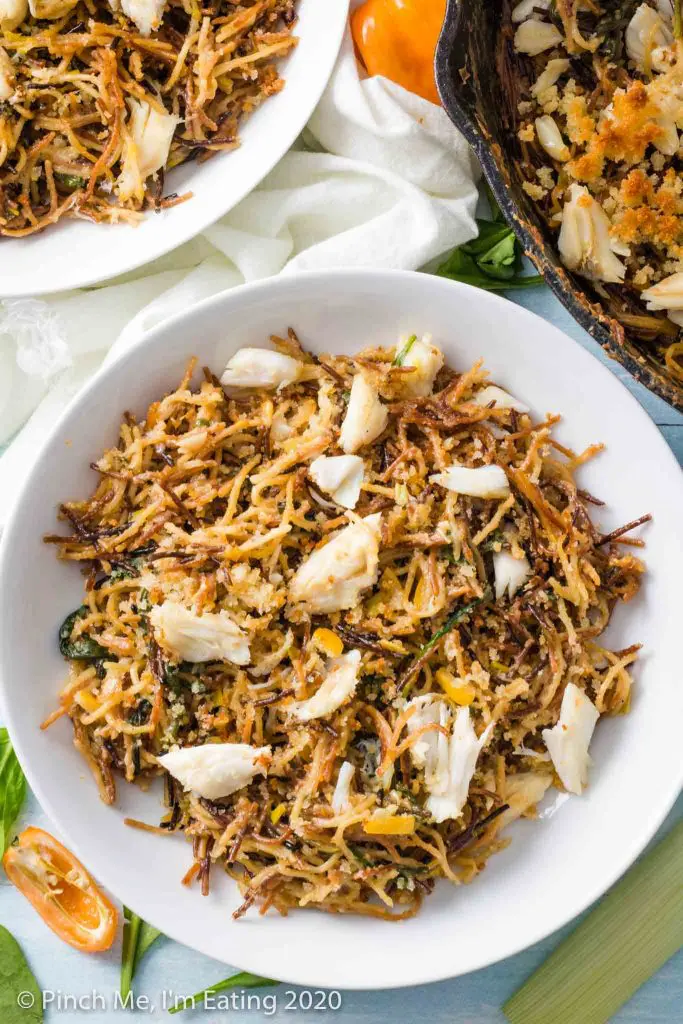
The pasta has a nutty flavor from being toasted, and the sauce is infused with just enough habanero to add a subtle flavor and and kick that just sneaks up as an aftertaste (although you can make it spicier if you wish!). Jumbo lump crab provides a tender sweetness, while preserved lemon adds a mellow brightness.
The whole thing is baked in the oven with a panko bread crumb topping, which gets nice and toasty and provides a little crunch throughout the dish.
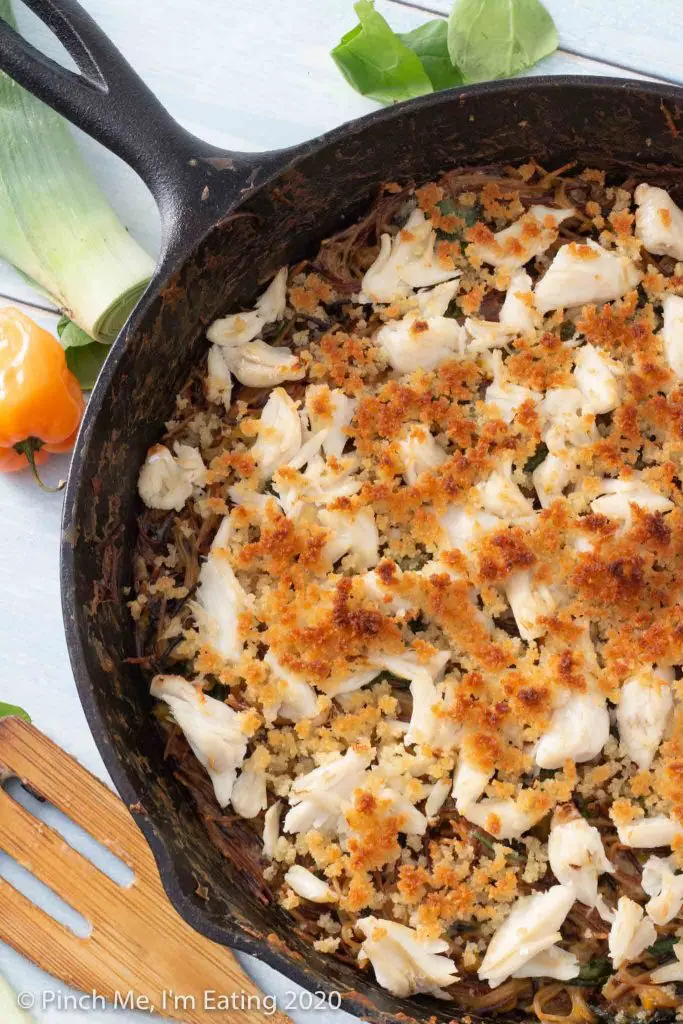
While the original crab pasta I had at Le Farfalle contained ramps, a hard-to-find spring onion with a very short season, I wanted the ingredients to be a bit more accessible and available year-round. Since ramps have a garlicky-oniony flavor and leafy ends, I substituted a combination of leeks, garlic, and spinach to convey a similar flavor and texture profile.
This dish is very simple to make, but it contains a couple techniques you may not be familiar with, so I’ll go through them here.
How to cut and wash a leek
I’ve used leeks here to give the dish a mild oniony flavor component without your standard white- or yellow-onion flavor and texture. If you haven’t cooked with leeks before, they look like giant green onions and have a bit of know-how you need to cut and wash them.
Cutting a leek
To cut a leek, you want to slice off the dark leafy end so you’re left with the creamy white and light green end bit. The dark leaves are too tough and fibrous to eat.
After that, you’ll want to peel off any tough outer layers so you’re just left with the tender inside. This will be at most probably one or two pieces you’ll peel off.
Then slice off the root end. For circles you can just slice across, but for half-moons (which we use in this recipe) cut it long-ways first and then slice thinly into semicircles.
Cut off the dark leafy end Peel off the tough outer layers For half-moons, slice vertically and then across
Washing a leek
Leeks are notoriously dirty or sandy between the layers, so you’ll want to get that grit out before you cook it. Rather than just running your cut leek under the faucet, there’s another, better way to get your leeks squeaky clean.
Fill a bowl with clean, cool water and drop your cut leeks in. Then swirl and swish it around for a bit with your hands. All the dirt and sand should fall to the bottom of the bowl, while the leeks stay floating on top.
If you were to then dump the whole bowl into a colander, you’d reintroduce that dirt back into your leeks. What you want to do instead is just scoop up the leeks out of the water with your hands and place them in a colander, leaving the dirt and sand in the bottom of your bowl of water.
Drop the cut leeks into a bowl of clean, cool water Swish the leeks around with your hands Scoop up the leeks with your hands and drain in a colander
All right, now your leek is ready! Onto the next how-to.
Using preserved lemons
What are preserved lemons anyway? They’re whole or quartered lemons preserved in nothing more than salt (or a mixture of salt and sugar) and their own juices. Preserved lemons are frequently used in Moroccan dishes and have a mellow salty tangy flavor, rather than the bright lemony flavor of fresh lemon zest. With preserved lemons, you use the whole rind instead of just the very outer layer of zest. They really add something special to the dish!
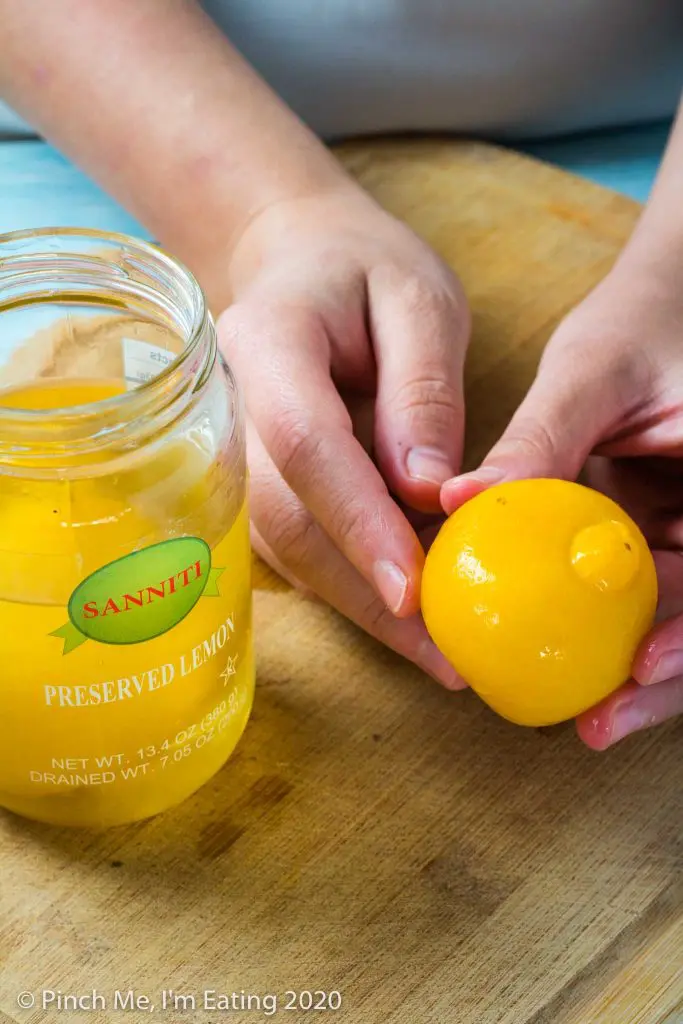
You can buy preserved lemons or make them yourself. I was anxious to make this dish, so I bought these guys on Amazon, but if you’d like to try your hand at making them yourself, my friend Marlee at I Just Make Sandwiches has a great recipe for preserved lemons here!! Just be aware it takes about a month for the lemons to preserve, but after that you can keep them in your fridge for quite a while. So if you’re interested in making this dish and preserving your own lemons but aren’t sure when, go ahead and start your lemons now and they’ll be ready whenever you want to make this dish!
To use a preserved lemon, first you will want to wash off the salty brine or you’ll introduce more salt than you want into your dish! The interesting thing about preserved lemons is that you use the rind, not the flesh, of the lemon. So to cut it, you’ll quarter your lemon (if it isn’t already quartered) or cut it into eighth wedges, and slide a knife between the meat and the rind.
The lemon pulp comes off quite easily and you’re left with a clean, smooth preserved lemon rind.
After that, just cut the rind into your desired sized pieces. Easy peasy!
Cut into wedges and remove the flesh of the lemon Discard the flesh and cut up the rind
The recipe calls for one preserved lemon but if yours are small like this one you may want to use one and a half or even two, if you like that preserved lemon taste (as a certified Lemon Lover, you KNOW I’d never turn down extra lemon!)
What are fideos: How (and why) to toast pasta
Fideos, literally, simply means “noodles” in Spanish. But what it actually refers to is short, broken thin noodles (like spaghetti or vermicelli) that are toasted golden brown before fully cooking by simmering in a broth or sauce. Fideos are used in Spanish/Catalonian cuisine for a paella-like dish as well as Mexican and some U.S. dishes (mainly soups). Or you could use it in dishes like this toasted angel hair pasta with crab! You can read more about fideos in this article from Bon Appetit.
Toasting the noodles in fat before cooking until they’re golden brown gives the final dish a toasty, nutty flavor and lovely color you won’t want to miss out on!
It’s really simple to do. Just break your noodles in half or three pieces (I did halves but I think it would be easier to stir if you break it into three pieces) and toast on medium heat in a good bit of olive oil. If they’re in smaller pieces you may be able to get away with stirring with a spatula, but if they’re a bit longer you can use tongs. The noodles will break up a bit more as you toast them and especially as you stir them into the sauce.
Toss in olive oil until pasta is fully coated, and toast until golden brown. Remove from the pan. Once you’ve made the sauce, add the toasted noodles back in to finish cooking.
Making the habanero cream sauce
Habanero peppers are REALLY HOT but don’t let that stop you from making this crab pasta if you can’t handle too much heat! There is no actual habanero in the final dish — that’s right, none. You use the pepper to infuse flavor and heat into the cream sauce, then remove it.
I left the habanero in large pieces (a quarter of the whole) and sautéed it with the leeks and garlic, made the cream sauce and simmered the noodles with the pepper, and then removed the large pieces of habanero before finishing the dish in the oven.
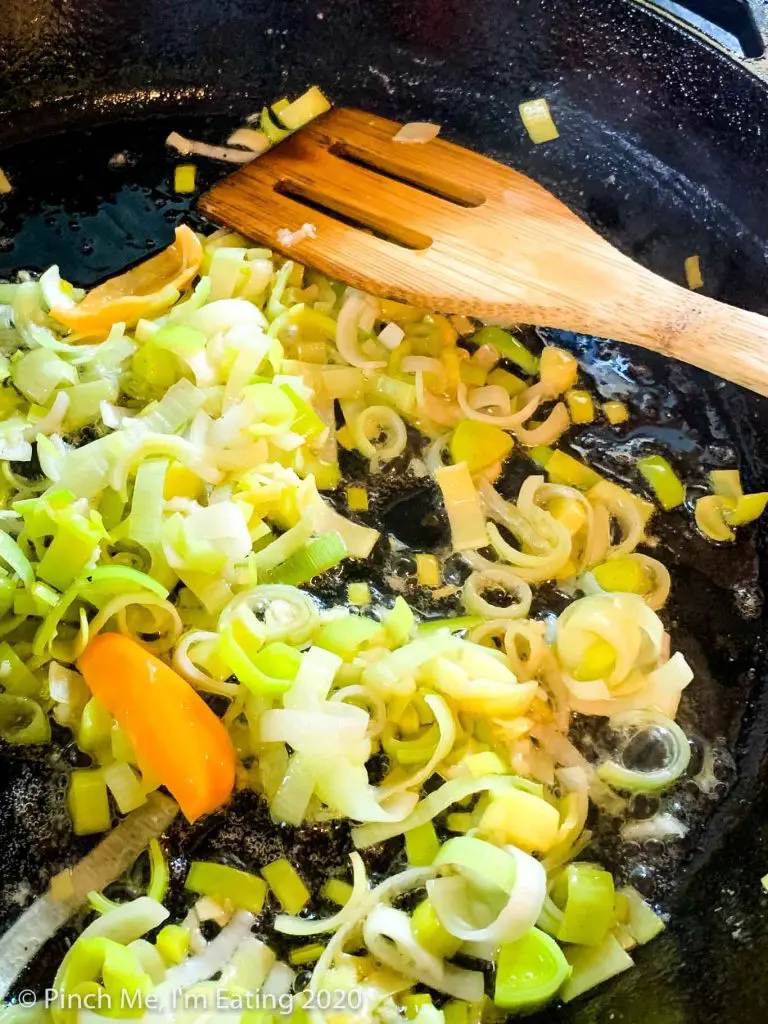
The first time I made this dish, I used one whole habanero pepper, quartered and seeds removed. Upon tasting the sauce, I thought there was no way I’d be able to eat it, it was so spicy! But by the time the fideos were added and the crab and the preserved lemon, yes it was a bit spicy but nothing I couldn’t handle (and I always order mild spiciness at restaurants). I even went back for seconds!
The second time I made this dish I used half a habanero instead (you’ll still want to remove the seeds: that’s the hottest part!). It infused a nice flavor into the sauce and a subtle heat but even if you don’t usually like spicy dishes it would be just fine!
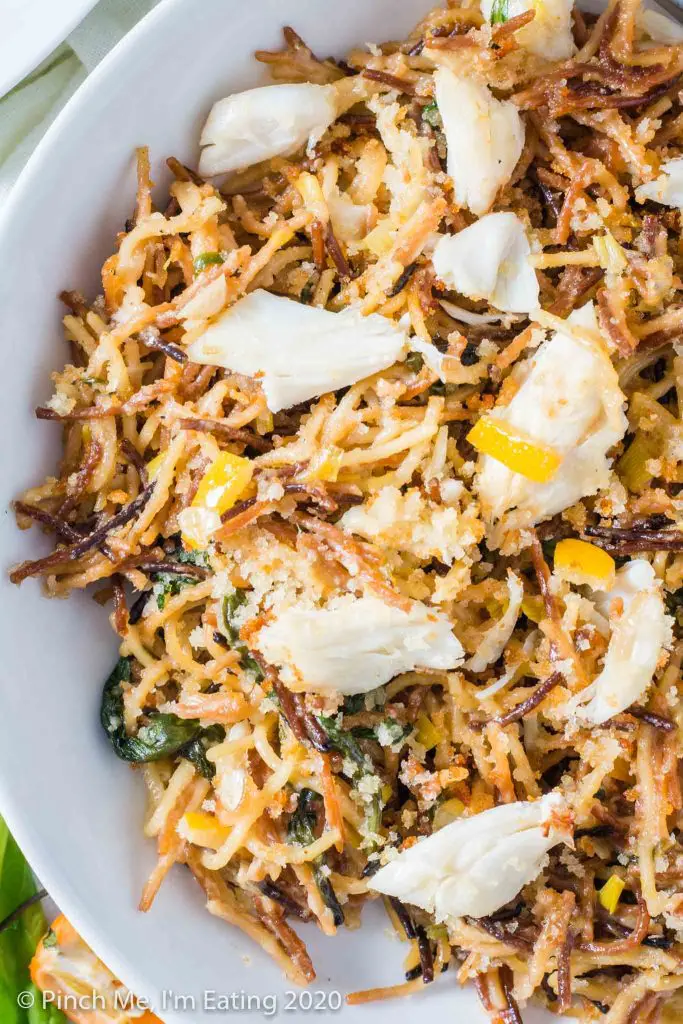
A word to the wise: Be VERY careful about avoiding touching the seeds, or if you do touch them, avoiding touching your face. I was great about it while actually cutting the pepper, but was handling the cut half quite a bit while taking photos. I touched my nose and HOO BOY. It was fire!
I even tried wiping cream on my nose to see if that would help, since you’re supposed to drink milk (rather than water) if you’ve eaten something too hot. Eventually it faded but that’s not an experience I’d wish upon anyone. I’m just glad it wasn’t my eyes!
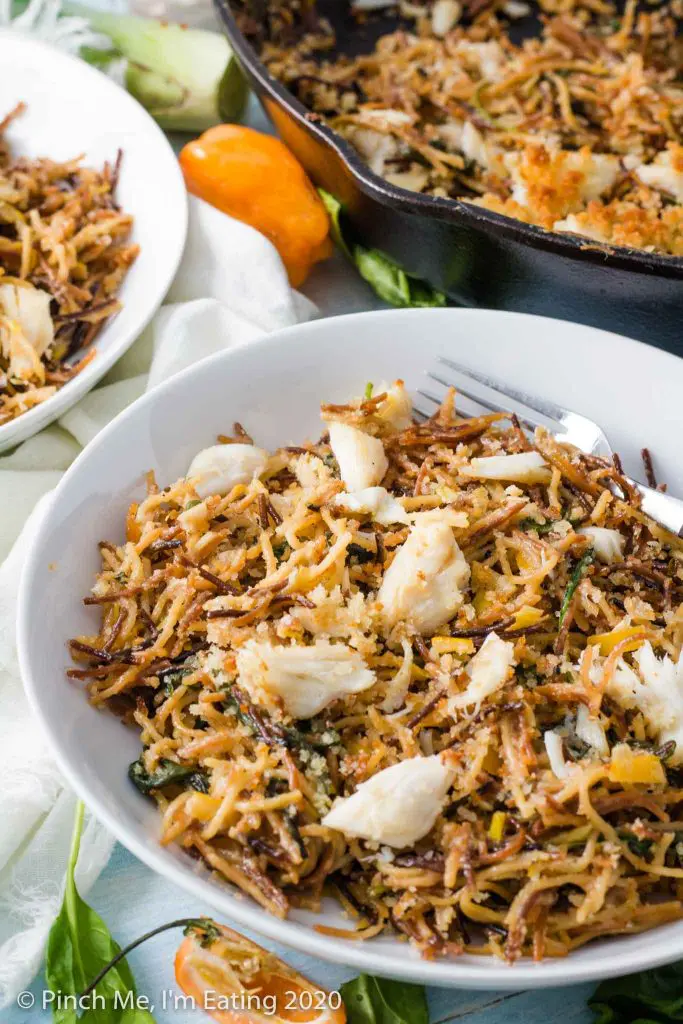
I’ve heard that putting olive oil on your fingers can provide sort of a barrier between the pepper and your skin to make it easier to wash off if you do accidentally handle the seeds, but I haven’t tried it myself.
So for this dish, if you like just a habanero undertone and subtle heat, use half a habanero. If you like a spicy dish, use a whole one.
Other notes about this crab pasta
After the pasta is simmered in the sauce (add some extra water if it starts getting too thick) add in the preserved lemon and spinach, and stir to combine.
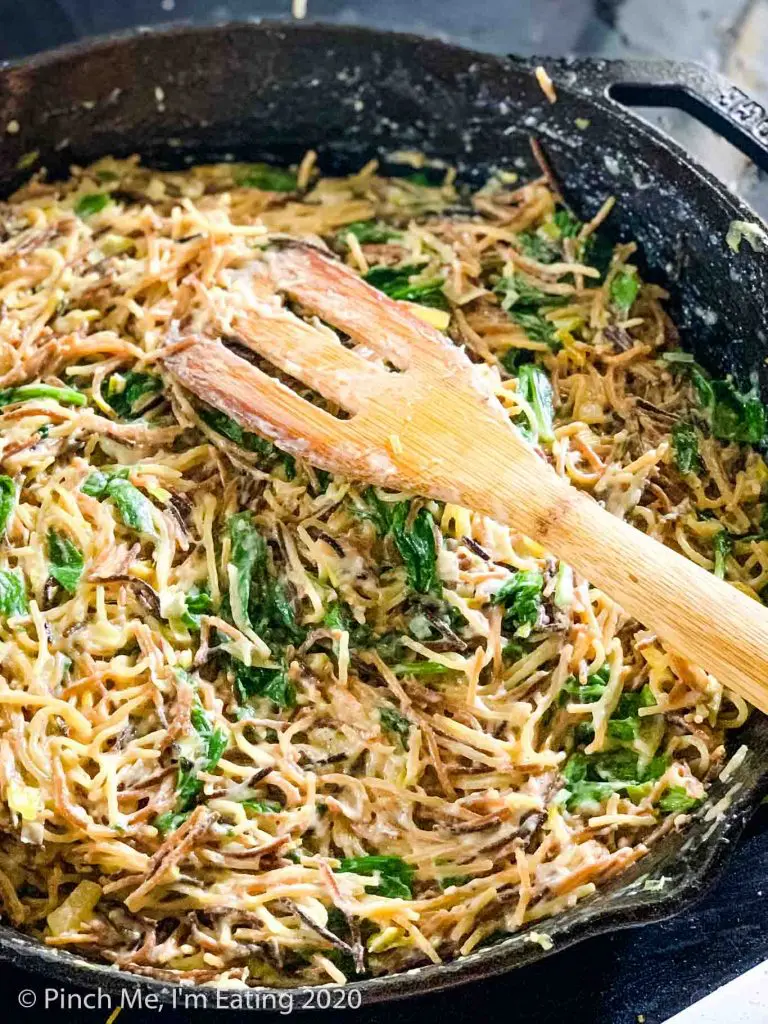
For a more luxurious dish, you’ll want to splurge and get some jumbo lump crab meat. Don’t stir it into the pasta or it will break up those tender, sweet lumps of crab! Just scatter them on top and then top with your buttery panko bread crumb mixture.
You can also use less expensive fresh crab meat like claw meat, but that tends to be in smaller shreds and have a richer, more crabby flavor (perfect for dips) rather than the light, sweet flavor of lump crab. Either way, it’s dang delicious.
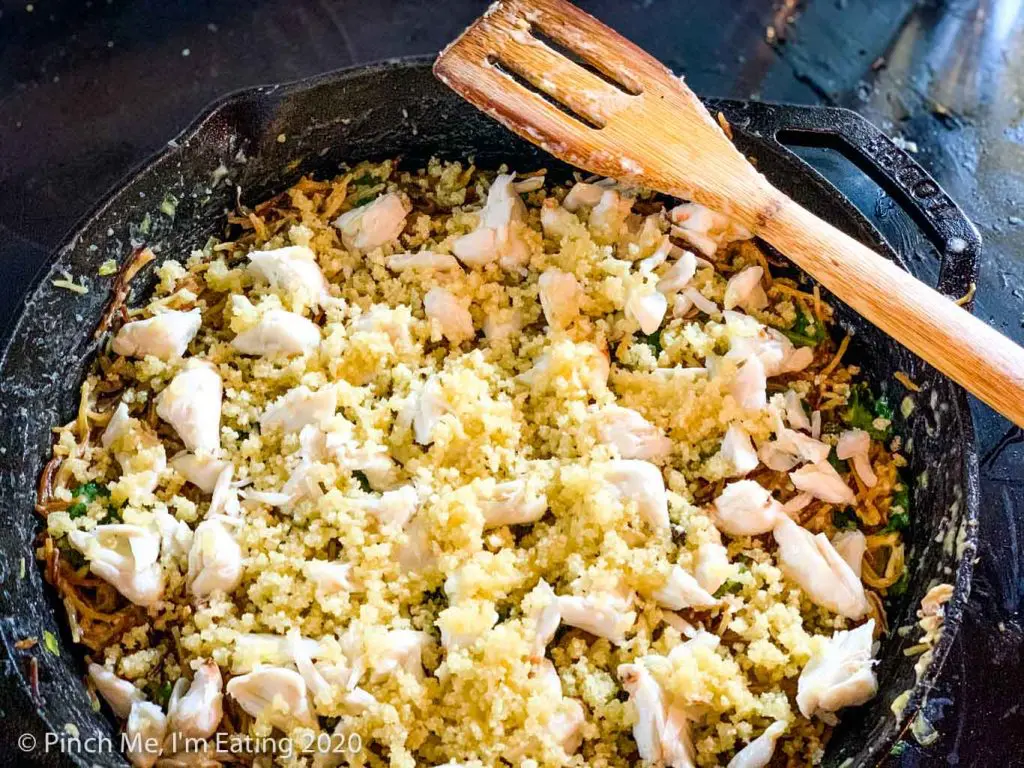
The breadcrumbs get all toasty brown in the oven through a combination of baking and then finishing off with a couple minutes under the broiler.
The best part is, once served, the dish still retains that bit of light and airy crunch from the breadcrumbs even though it’s incorporated into the pasta.
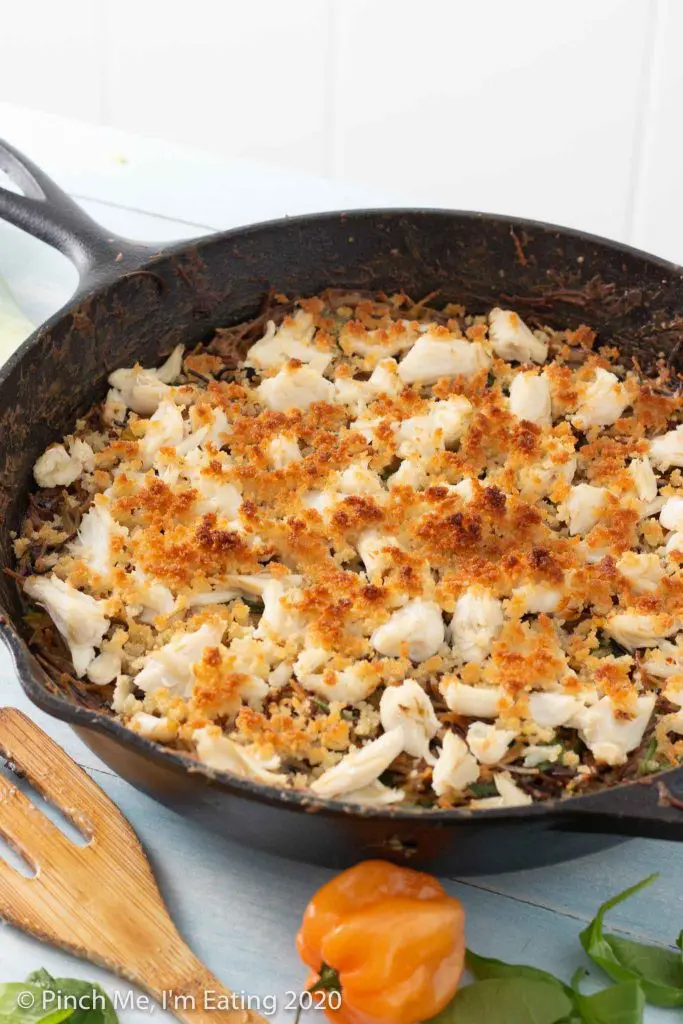
So this crab pasta may contain a few unfamiliar techniques or ingredients like cutting leeks, using preserved lemons, or toasting angel hair pasta, but none of them are actually difficult. What you end up with is a super impressive and complex one-pan meal you’ll remember for months to come.
Love shellfish? Try these dishes!
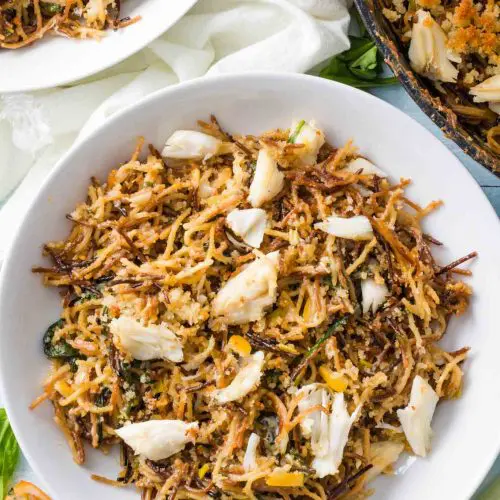
Fideos: Toasted Angel Hair Pasta with Crab and Habanero Cream Sauce
Equipment
Ingredients
- 8 oz angel hair pasta broken in half or three pieces
- 1/4 cup olive oil
- 1/2 tsp salt
- 2 tbsp butter
- 1/2 habanero pepper seeds removed and left in 2 large pieces (use a whole pepper, seeds removed and quartered, if you like more of a kick)
- 1 leek sliced into half-moons and washed (see post for instructions)
- 3 cloves garlic minced
- 1/4 cup flour
- 1 1/2 cups milk
- 1 1/2 cups water
- 1/4 cup cream
- 1/2 cup white wine
- 8 oz lump crab picked over for bits of shell
- 1/2 bag baby spinach 3 cups, loosely packed
- 1 preserved lemon (use 2 if desired)
- Kosher salt to taste
For the topping
- 1/2 cup panko bread crumbs
- 4 tbsp butter
Instructions
- Preheat oven to 350 degrees Fahrenheit.
- Cut preserved lemon into 8 wedges. Slide a knife between the meat of the lemon and the rind, removing and discarding the flesh. Slice the rind into small pieces (this is what you will be using). See details and photos in the post.
- Heat olive oil in large cast iron skillet over medium heat. Add angel hair and salt and toast for 2-3 minutes, stirring constantly, until golden brown.
- Using tongs, remove pasta into a bowl, leaving oil in the pan.
- Add 2 tbsp butter and sauté habanero, leeks, and garlic, for 3 minutes or until leeks are tender.
- Add flour and stir constantly for 2-3 minutes to cook the flour. Slowly mix in milk, water, cream, and white wine. Add back toasted pasta and bring to a boil. Reduce heat to medium low and simmer until pasta is cooked through, about 10 minutes. Note: If sauce starts getting too thick, add half a cup of water. You can do this again later if you need to (it’s hard to estimate an exact half a box of pasta!).
- Turn off heat and remove habanero. Stir in spinach and preserved lemon rind. Scatter crab meat over the top of the pasta dish.
- Mix bread crumbs and melted butter. Top pasta with bread crumb mixture and bake for 15 minutes. Broil an additional 1-2 minutes if the top isn’t browned yet.

